展覧会についてExhibition
Chapter 1. Dialogue with the body
This section introduces the significance of the role played in Noguchi’s work by physicality. It includes sculpture, drawings, stage sets, and other works mainly from his early period.
Peking Brush Drawings
In his early 20s, Noguchi spent time in Paris, studying abstract sculpture under pioneering 20th century sculptor Constantin Brancusi. In his mid-twenties, he visited Beijing, where he executed a large number of figurative drawings in brush and ink, now known as his Peking Brush Drawings. Strong brushwork and bold lines expressed the volume and the energy of his figures, wonderfully capturing a sense of movement. This series can be seen as a starting point for the investigation of physicality that became a constant foundation for his work. For the first full-fledged introduction of the series in Japan, eight works are presented together.
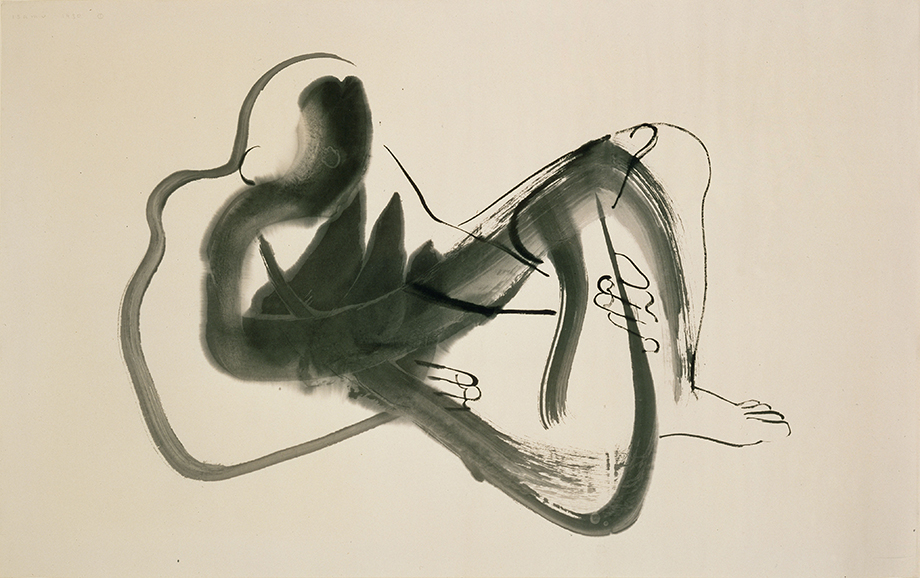
-
Isamu Noguchi, Peking Drawing (man reclining),
1930, Ink on paper,
The Isamu Noguchi foundation and Garden Museum, New York
©The Isamu Noguchi Foundation and Garden Museum, New York / Artist Rights Society [ARS] - JASPAR.
Photo by Kevin Noble.
Collaboration with Martha Graham
From the mid-1930s, Noguchi became actively involved in stage design. His collaboration with Martha Graham, pioneer of modern dance, is particularly significant, spanning more than thirty years. The link between physical movement and spaces for performance and other activities that this collaboration entailed provided great stimulus for Noguchi’s ideas. Sculpture, drawings, and video are employed here to demonstrate his work for the stage.
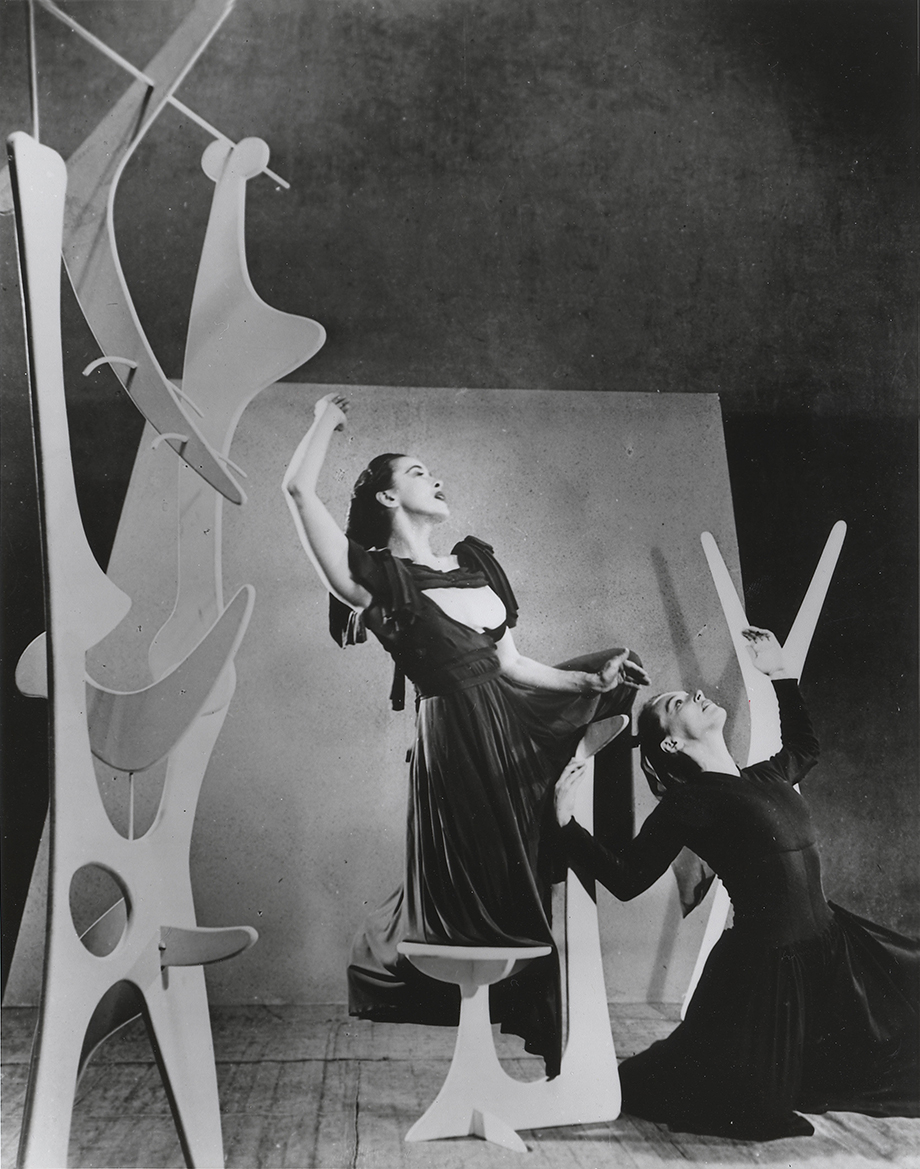
-
Isamu Noguchi, Stage Set for Martha Graham’s “Herodiade,”
1944
©The Isamu Noguchi Foundation and Garden Museum, New York / Artist Rights Society [ARS] - JASPAR.
Photo by Arnold Eagle.
Chapter 2. Reunion with Japan
Following his visit to postwar Japan in 1950, Noguchi took a great interest in Japanese lifestyle, traditions, history, and society. In Japan, he mixed with many artistic and creative people, including architect Yoshiro Taniguchi (1904-79) and ceramicist Rosanjin Kitaoji (1883-1959), and these encounters led to new works. In addition to sculpture, Noguchi’s work of this period crossed into genres such as furniture and lighting design, architectural interiors, and gardens. Focusing on the works of the 1950s, when he reacquainted himself with Japan, this chapter sheds light on Noguchi’s synthetic vision, which led to works that functioned as sculpture in society and daily life.
Reunion with Japan seen through ceramics
In Japan, Noguchi married movie star Yoshiko Yamaguchi (Shirley Yamaguchi: 1920-2014). He relocated to Japan and threw himself into ceramic art, working at locations that included a studio on Rosanjin’s estate at Kita Kamakura. The Japanese climate, haniwa figures, and other inspirations led him to produce rustic, relaxed forms that are replete with a vitality that had been forgotten by contemporary people. The fact that Noguchi produced ceramic works only in Japan suggests that this may have been an approach he employed to confront Japan, his second set of roots.
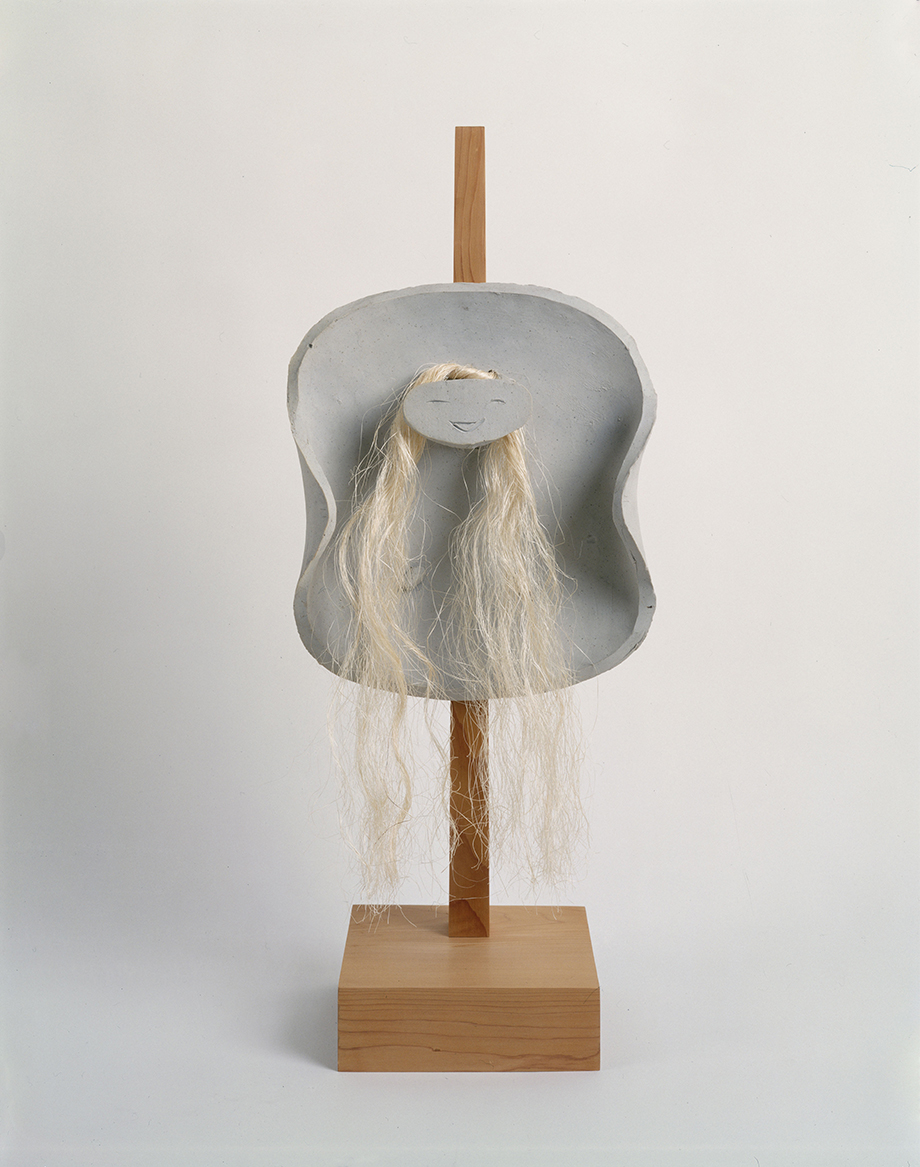
-
Isamu Noguchi, Beppin-san (Beautiful Woman),
1952,
Seto stoneware, hemp,
The Isamu Noguchi foundation and Garden Museum, New York
©The Isamu Noguchi Foundation and Garden Museum, New York / Artist Rights Society [ARS] - JASPAR.
Photo by Kevin Noble.
Gaze into synthesis through collaboration with architects
Soon after arriving in Japan, Noguchi worked with architect Yoshiro Taniguchi on the new Banraisha (1950-51) at Keio University, Tokyo to produce a sculptural space that was a synthesis of architecture, interior design, craftwork, sculpture, and garden design. It was a modern design, but made substantial use of traditional Japanese materials. In addition to commemorating his father, the poet Yone Noguchi, who taught at Keio for many years, it was a memorial to the many Keio students lost in the war. This chapter introduces Noguchi’s initiatives to link this sort of sculpture with history and society, and includes his work on other projects in the same period, such as the Cenotaph for Hiroshima.
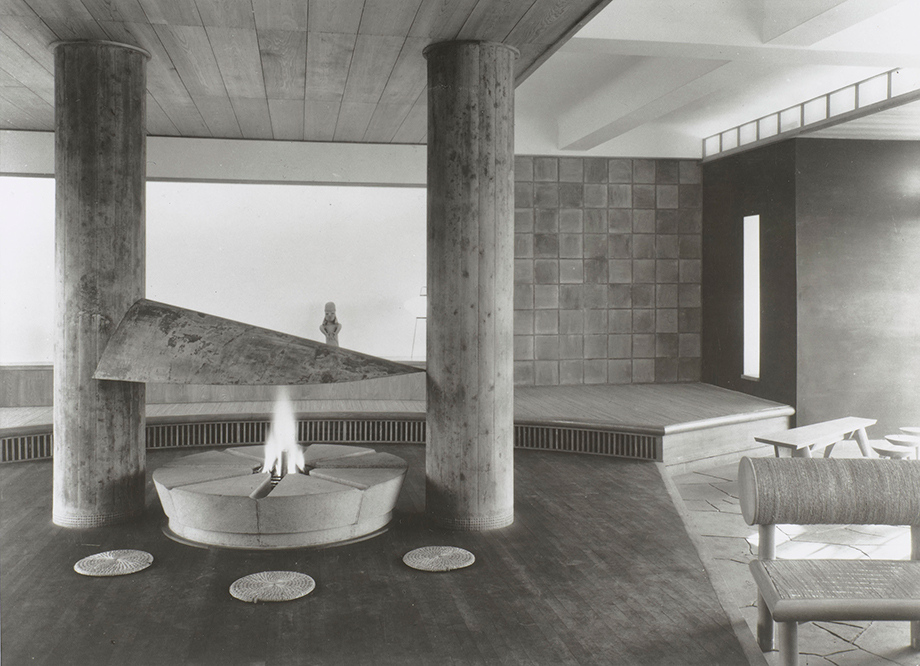
-
Isamu Noguchi, Interior of Banraisha, Keio University, Tokyo,
1950-51, (2003 dismantled, partly relocated)
©The Isamu Noguchi Foundation and Garden Museum, New York / Artist Rights Society [ARS] - JASPAR.
Photo by Chuji Hirayama.
Akari light sculptures
During a visit to Gifu Prefecture, Noguchi was inspired by the lanterns traditionally made in the area. The Akari light sculptures that resulted are still popular as lamps today. They demonstrate the universality of works created by Noguchi to link life and art, in addition to bearing witness to his inspiration from Japanese traditions.
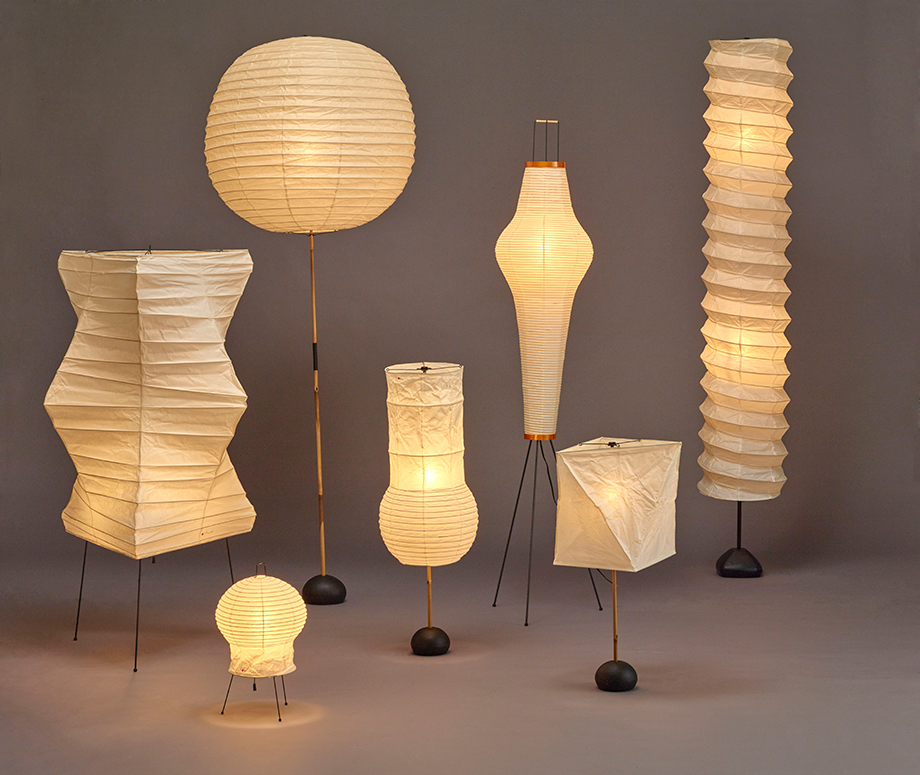
-
Isamu Noguchi, Akari, designed 1953-,
Paper, bamboo, metal,
The Kagawa Museum
Chapter 3. Sculpturing of space— growing fascination with gardens
Noguchi created many gardens, parks, and landscapes that can be considered sculptures using the earth as their material, and continued this approach until the end of his life. His ideas on an environmental scale date back to a very early stage, and he executed many such projects from the 1960s onwards. Noguchi’s garden works were attempts to link sculpture with the earth, and at the same time they were an investigation of the human body tied to the earth by gravity.
Noguchi’s gardens and world culture
Noguchi’s environmental works take their inspiration from East and West, ancient and modern, including Japanese Zen gardens and stone antiquities that he visited around the globe. He compiled and edited world culture. In Sunken Garden for Chase Manhattan Bank Plaza (1961-64), he created a restful place with the tranquillity of a Japanese garden.
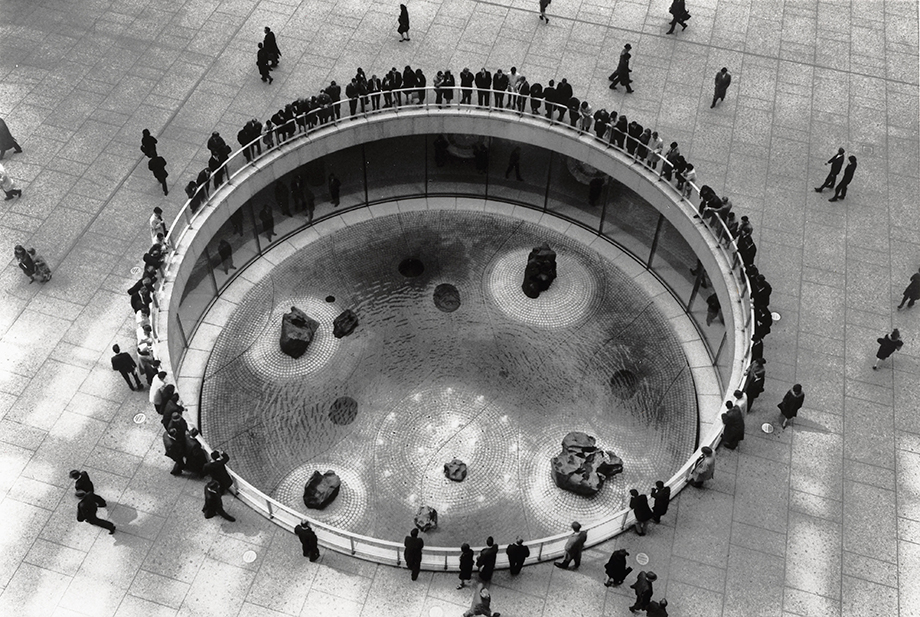
-
Isamu Noguchi, Sunken Garden for Chase Manhattan Bank Plaza,
1961-64, New York
©The Isamu Noguchi Foundation and Garden Museum, New York / Artist Rights Society [ARS] - JASPAR.
Photo by Arthur Levine.
Play sculpture and the earth
Noguchi also produced play equipment for his gardens, out of a desire for children to “confront the earth as, perhaps, early man confronted it”. His Octetra play sculptures are based on a truncated tetrahedron with a spherical void. The geometry attests to the influence of his closest friend, inventor and philosopher Buckminster Fuller.
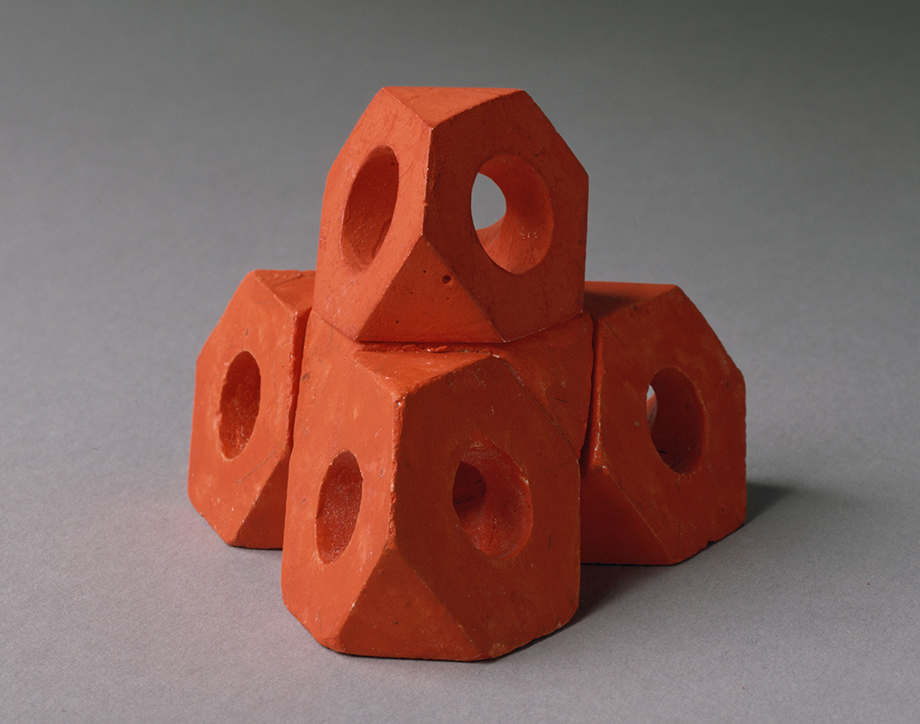
-
Isamu Noguchi, Model for Octetra,
1968,
Cast plaster painted red/orange,
The Isamu Noguchi foundation and Garden Museum, New York
©The Isamu Noguchi Foundation and Garden Museum, New York / Artist Rights Society [ARS] - JASPAR.
Photo by Kevin Noble.
Chapter 4. Communing with nature—stone sculptures
The second half of Noguchi’s life is best typified by his austere sculptures in basalt and granite, stones that are harder than marble. These works, which are based on simple forms, and frequently make substantial use of the natural face of the stone, go beyond the conventional concept of sculpture. To Noguchi, stone was not just a material to be sculpted into the form that he desired. He saw it as primordial matter that told of the immemorial past of our planet and the workings of nature and life. In it, Noguchi sensed a deep attraction that draws people towards the passage of time carved into the earth. His stone sculptures complemented his work with gardens, firmly re-attaching our minds and bodies to the earth, extending contemplation to space and time, and resulting in the creation of a rich and unstressed world.
Meeting with Masatoshi Izumi and Noguchi’s workshop in Mure
In 1964, Noguchi met Masatoshi Izumi (1938-), a young stone cutter, in Mure, a town in Kagawa Prefecture that is known for its stone. Izumi became a major collaborator in Noguchi’s work, and Mure came to rival New York as a production site. Noguchi valued Izumi for his knowledge and skills as a stonecutter, and from him received many ideas and much inspiration. Noguchi worked with Izumi to turn the surroundings of his studio in Mure into a sculpture garden. That has now become the Isamu Noguchi Garden Museum Japan, and visitors are able to see the facility largely unchanged from the time when Noguchi was still alive.
-
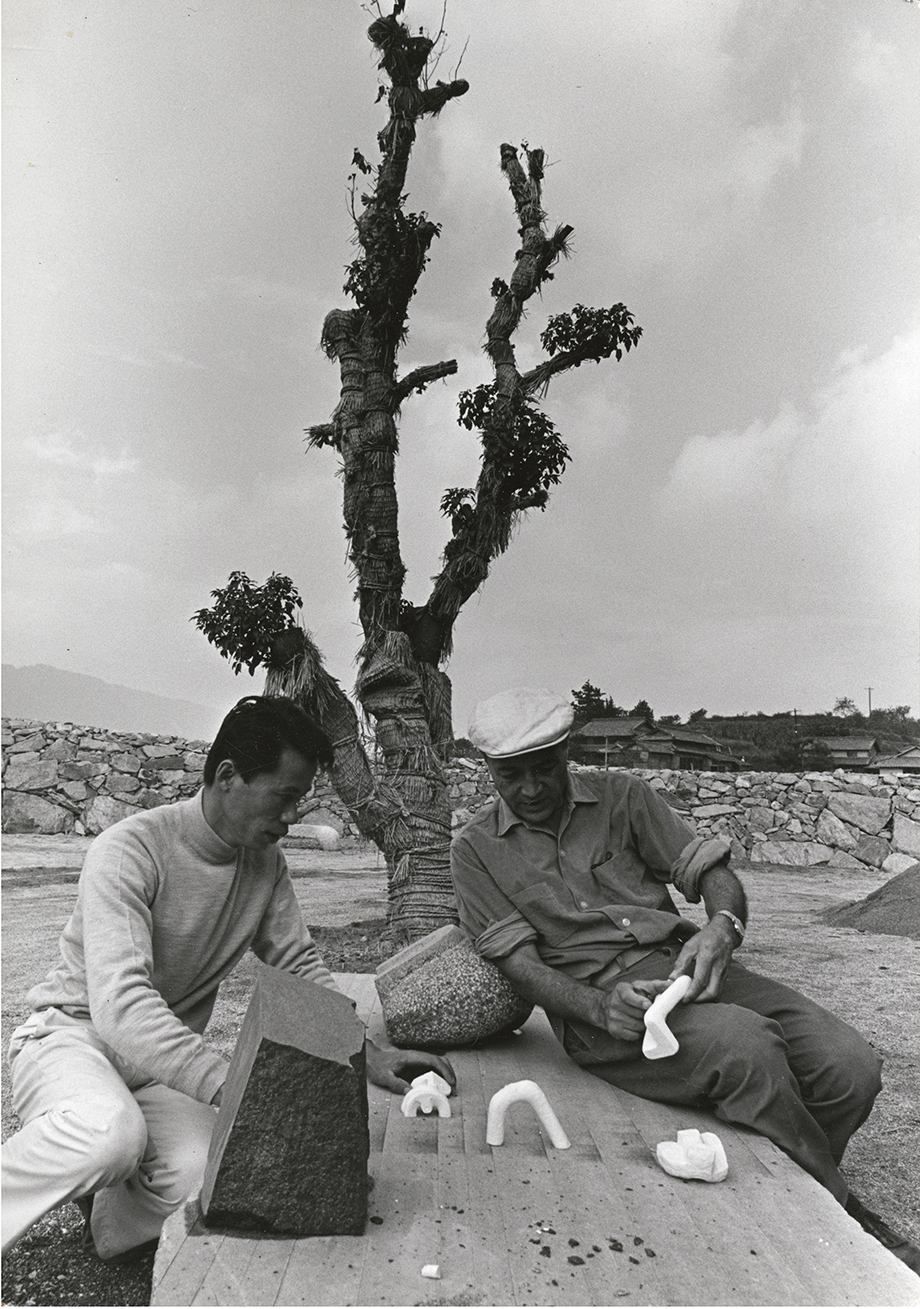
-
Isamu Noguchi and Masatoshi Izumi working in the atelier in Mure, Kagawa,
c.1970
©The Isamu Noguchi Foundation and Garden Museum, New York / Artist Rights Society [ARS] - JASPAR.
Photo by Michio Noguchi.
-
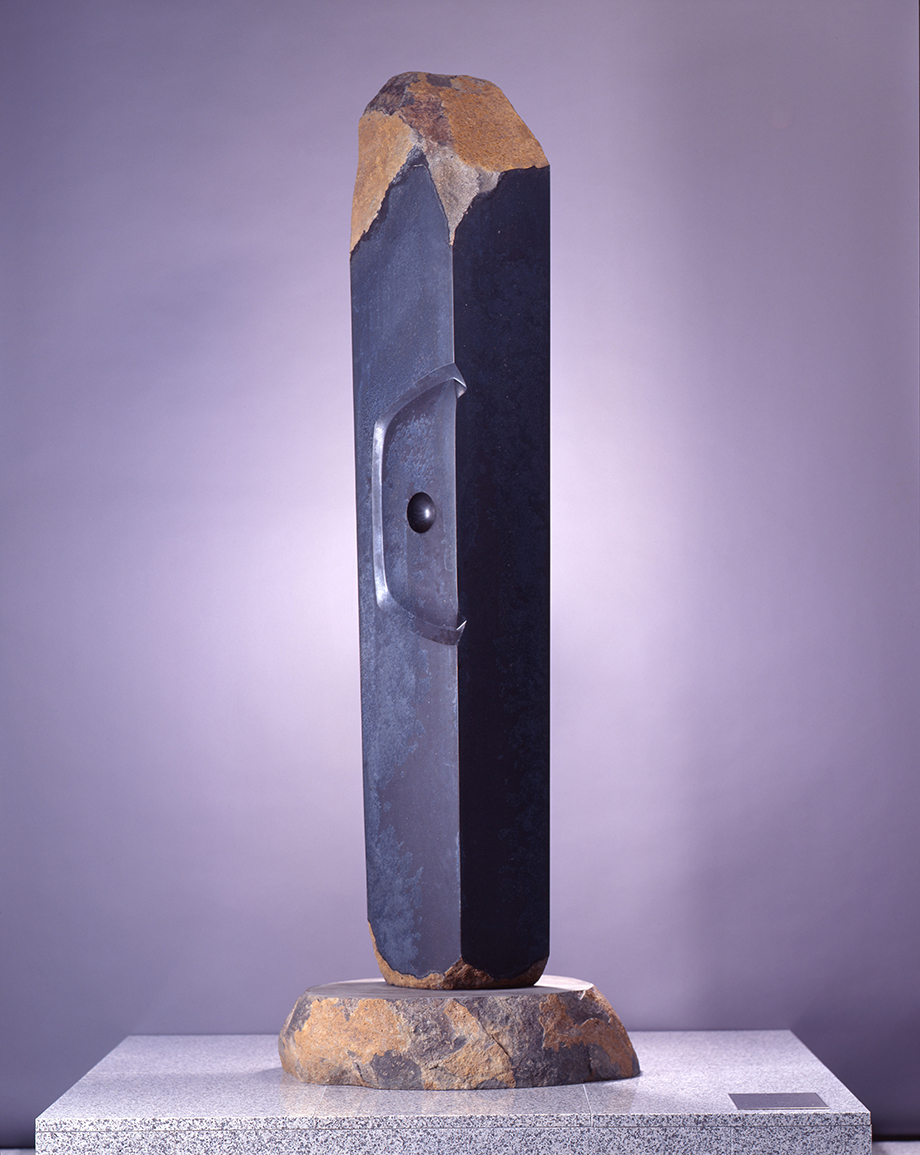
-
Isamu Noguchi, Archaic,
1981, Basalt,
The Kagawa Museum
©The Isamu Noguchi Foundation and Garden Museum, New York / Artist Rights Society [ARS] - JASPAR.
Photo by Akira Takahashi.




